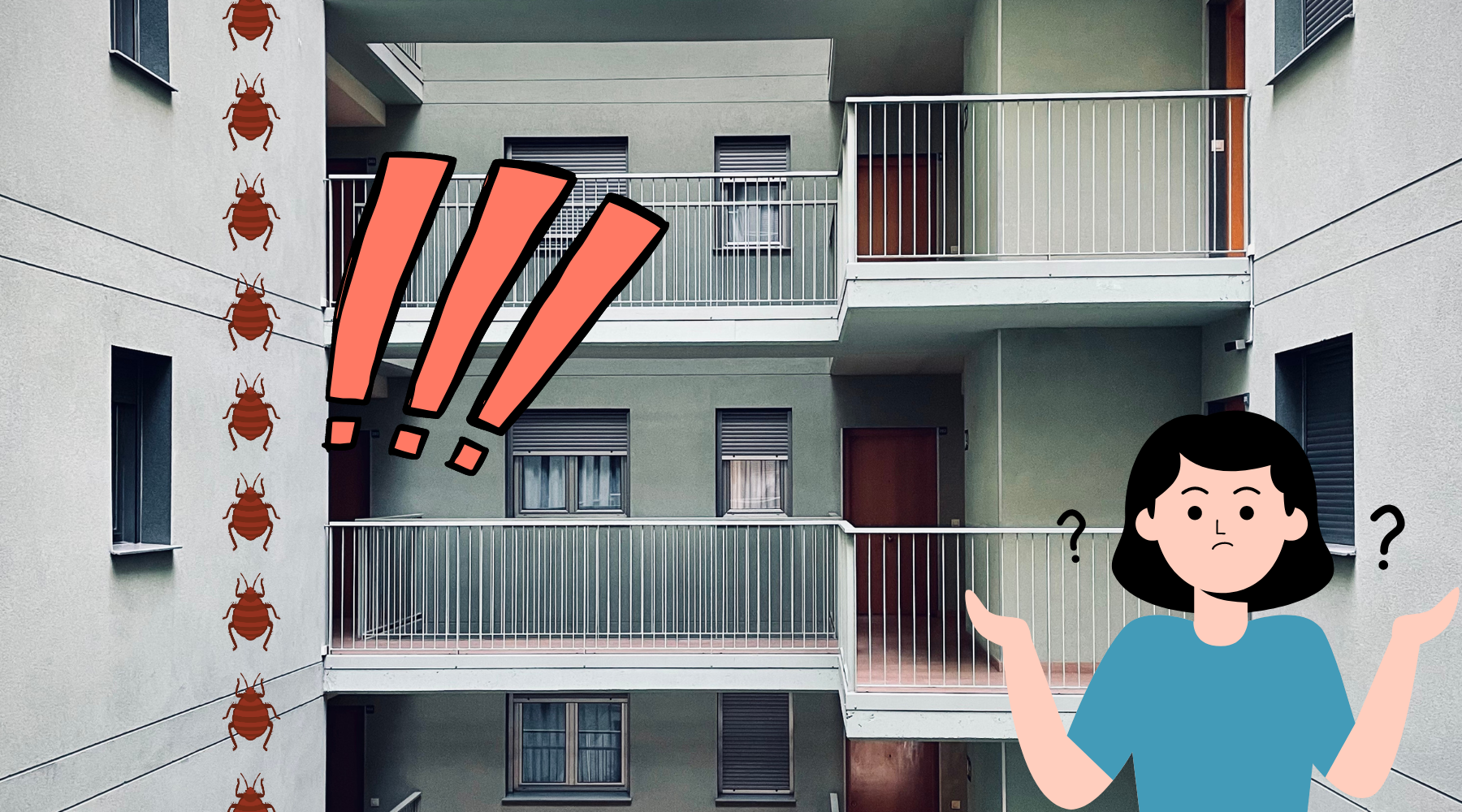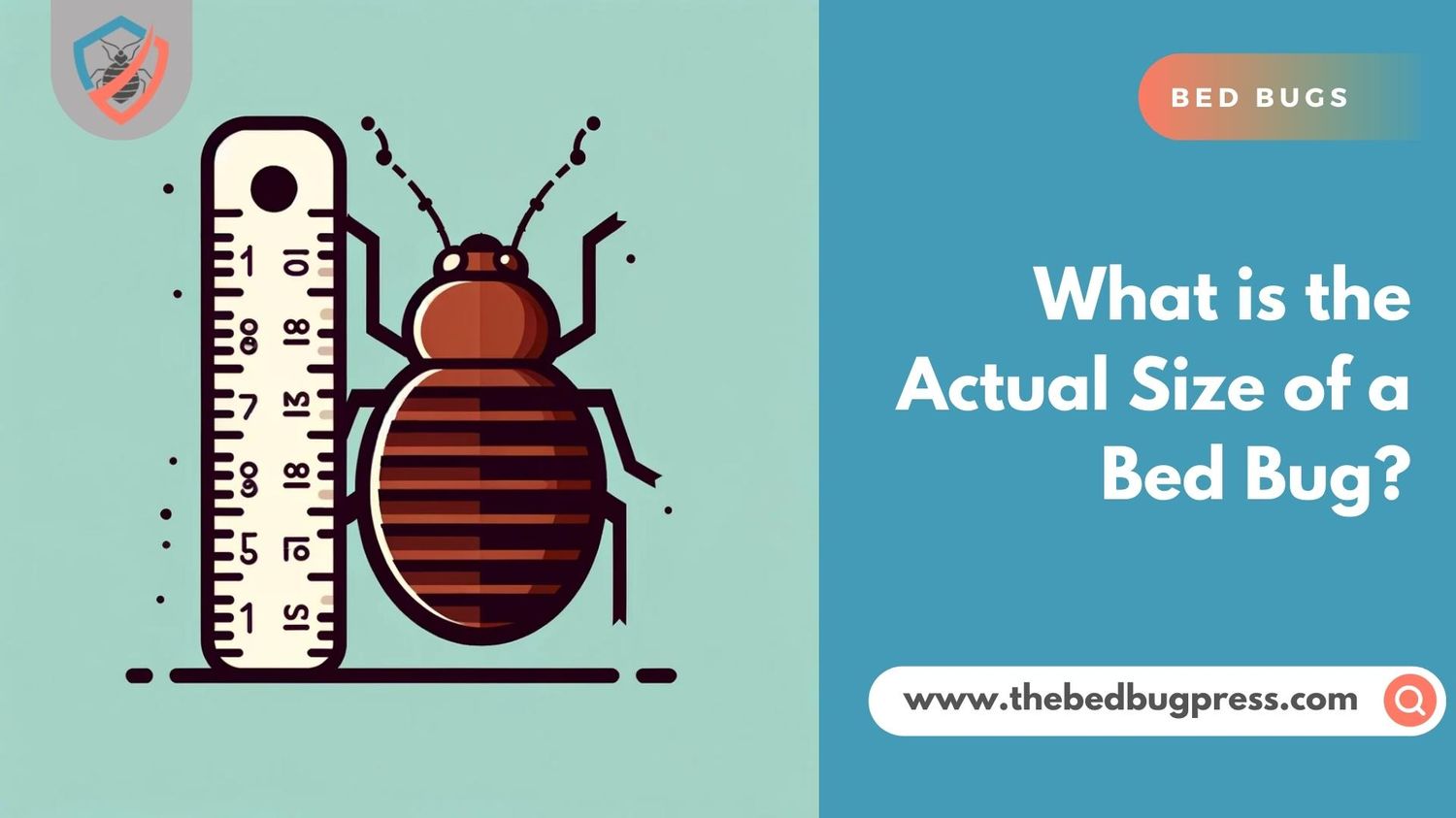As a renter, it is important you know your rights once you discover that there are bed bugs in your apartment. It is given that bed bugs are annoying, but they can also pose health risks, especially to people with sensitive skin. You have certain rights as well as responsibilities as a tenant when it comes to dealing with the bed bugs found in your apartment complex.
Reading through, you will learn more about tenant rights and the responsibilities of the landlord, especially when it comes to resolving issues regarding bed bugs. If you are trying to remove bed bugs from your apartment, read on to learn how to do it properly.

Responsibilities of Landlords Regarding Bed Bugs in Rental Properties
If you are a tenant facing bed bugs in your rental property, it is crucial to be aware of both your rights and the responsibilities of your landlord.
- At the time you move into a rental property, landlords are typically accountable for ensuring that there are no traces of bed bugs present.
- Even during your tenancy, if bed bugs appear, it remains the landlord’s duty to promptly address the issue and eliminate the infestation.
- Landlords are obligated to provide written information to tenants about bed bugs, including identification methods, preventive measures, and the necessary steps to take if bed bugs are discovered.
- Charging tenants for bed bug treatment or requiring them to bear any related expenses is prohibited by landlords.
- In cases where landlords fail to address a bed bug infestation in a timely and effective manner, tenants may have legal options available to them.
As a tenant, it is important to familiarize yourself with your rights and the responsibilities of your landlord regarding bed bug infestations in rental properties. This knowledge will help ensure that your living space remains comfortable and safe.
Tenants’ Rights Regarding Prior Bed Bug Infestations in Rental Units
When it comes to a history of bed bug infestations in your rental unit, it is essential for tenants to understand their rights.
- Before new tenants move in, landlords are required to disclose any known history of bed bug problems in the rental unit.
- In certain states, landlords are legally obliged to disclose the history of bed bug-infested units, regardless of whether tenants inquire about it or not.
- If a landlord fails to disclose a history of bed bugs, tenants may have legal options if they subsequently encounter bed bug problems.
- Tenants have the right to inspect a rental unit for bed bugs prior to signing a lease or moving in.
- To protect themselves from bed bugs, tenants should take preventive measures such as regular cleaning and vacuuming, and promptly report any suspected infestations to their landlord.
As a tenant, understanding your landlord’s disclosure responsibilities and taking preventive measures can help ensure that your rental unit remains free from bed bug issues.
A Guide to Landlord and Tenant Rights Regarding Bed Bugs
Bed bugs can be a serious issue for both landlords and tenants. You should know the rights and responsibilities of both parties to effectively manage and prevent bed bug infestations in rental properties.
- Landlords are responsible for providing rental units free from bed bugs at the time of move-in.
- Tenants have the right to live in a rental unit free from bed bugs and other pests.
- Landlords must address bed bug infestations promptly and effectively, which may include hiring professional exterminators.
- Tenants must cooperate with landlords and take steps to prevent bed bug infestations, such as reporting any suspected infestations and regularly cleaning and vacuuming their living space.
- Landlords are generally responsible for the cost of bed bug treatment, but they may seek reimbursement from tenants if the infestation was caused by the tenant’s actions.
- Tenants have the right to take legal action against landlords who fail to address bed bug infestations.
As landlords and tenants work together, it is possible to manage and prevent infestations in rental properties.
Who is Responsible for Paying for Bed Bug Extermination?
The issue of who is responsible for covering the expenses of bed bug extermination in rental properties can be a topic of debate and may depend on local laws and your specific circumstances. Generally, landlords are accountable for ensuring that rental units are free from bed bugs when tenants move in, and they are required to promptly address any infestations that occur during the tenancy.
Landlords bear the financial burden and extermination costs of controlling bed bugs, which can be a costly endeavor often requiring multiple treatments by professional exterminators. In many cases, landlords opt to hire exterminators to treat the entire building or complex to prevent the spread of bed bugs from one apartment to another.
However, if it is determined that the tenant is responsible for the bed bug infestation, the landlord may impose a pest control fee. For instance, if a tenant introduces used furniture or brings in items infested with bed bugs, they can be held liable for the costs associated with extermination services.

Taking Action When the Landlord Fails to Pay for Bed Bug Treatment
Dealing with bed bugs in a rental property can be a daunting and expensive challenge. In cases where the landlord refuses to cover the entire cost of treatment, tenants may feel helpless and uncertain about their next steps. However, there are actions that tenants can take to address this situation.
Communicate with the landlord:
The first step is to inform the landlord about the bed bug infestation. It is important to maintain a record of all communications and provide the landlord with information regarding the infestation and the associated treatment costs.
Review the lease agreement:
Tenants should carefully review their rental agreement to determine if there are any provisions related to bed bug treatment. Some leases may assign the responsibility of payment to the tenant, while others may hold the landlord accountable.
Contact local tenants’ rights organizations:
If the landlord refuses to pay for treatment, tenants can seek guidance and support from local tenants’ rights organizations. These organizations can provide advice on the legal rights of tenants and offer assistance in resolving the issue.
Consider legal action:
In situations where all other attempts have failed, tenants may need to take legal action to compel the landlord to cover the cost of bed bug treatment. This could involve filing a complaint with the local housing authority or pursuing legal recourse through the court system.
Dealing with a bed bug infestation when the landlord fails to pay for treatment can be a stressful experience. However, tenants have options to address the situation, including communicating with the landlord, reviewing the lease agreement, seeking assistance from tenants’ rights organizations, a professional pest control company, and taking legal action if necessary.
By taking these proactive steps, tenants can protect their rights and ensure that their rental unit remains a comfortable and safe place to live.
Understanding the Process of Reporting a Bed Bug Problem
Bed bug infestations can be a significant concern for tenants in rental properties. When faced with such an issue, tenants may be unsure about the proper steps to take in reporting the problem to their landlord.
Promptly report the problem:
Tenants should report any suspected bed bug infestations to their landlord as soon as possible. Delaying the report could result in a larger infestation, which can be more challenging and costly to address.
Document the infestation:
It is important for tenants to document the bed bug infestation by taking photos or videos of any evidence, such as bed bug bites, bloodstains, or live bugs. This documentation can serve as proof of the extent of the infestation and may be useful in legal proceedings if necessary.
Follow up with the landlord:
If the landlord does not respond to the initial report, tenants should follow up in writing, requesting action to address the problem. Keeping a record of this communication is essential for future reference.
Cooperate with treatment efforts:
Tenants should cooperate with their landlord to allow access to the rental unit for treatment. This may involve temporarily vacating the unit, washing and drying all clothing and bedding, and preparing the unit for treatment by decluttering and vacuuming.
Know tenant rights:
Tenants have the right to live in a rental unit free from bed bugs and other pests. If the landlord fails to address the bed bug infestation, tenants may have legal options, such as withholding rent, seeking compensation for damages or expenses related to the infestation, or terminating the lease agreement.
Reporting a bed bug problem to a landlord can be a challenging process, but it is crucial for addressing the issue and safeguarding the well-being of tenants.
By promptly reporting suspected infestations, documenting the problem, cooperating with treatment efforts, and understanding their rights, tenants can take proactive control measures, to address bed bug infestations and ensure a comfortable and safe living environment.
Preparing Your Apartment for an Inspection
Bed bugs can be a persistent and challenging problem in rental properties, and many landlords will conduct routine inspections to identify and address infestations. To prepare for an inspection, tenants should take certain steps to ensure that their apartment is clean and free from bed bugs.
Declutter the apartment:
Bed bugs can hide in clutter, so tenants should remove any unnecessary items from their apartments before the inspection. This can include old magazines, newspapers, and cardboard boxes.
Wash and dry all linens:
All linens, including bedding, towels, and curtains, should be washed in hot water, and dried on high heat. This can kill any bed bugs or eggs that may be present.
Vacuum the apartment:
Tenants should vacuum their apartment thoroughly, paying special attention to areas where bed bugs are likely to hide, such as along baseboards, cracks and crevices, and furniture.
Seal cracks and gaps:
Bed bugs can enter apartments through small cracks and gaps in walls and floors, so tenants should seal any openings with caulk or another appropriate sealant.
Be prepared to vacate the apartment:
If the inspection reveals a major bed bug problem or infestation, the landlord may require tenants to vacate the apartment temporarily while treatment is conducted.
Preparing for a bed bug inspection can be a time-consuming process, but it is essential to ensure that the inspection is successful and that any infestations are addressed promptly.
Doing all these and being prepared to vacate, if necessary, tenants can help ensure that their apartment is always clean and safe from bed bug infestation.
Effective Bed Bug Treatment: Knowing Your Options
Bed bugs are notoriously difficult to treat and can require a multifaceted approach to eliminate. There are several effective bed bug treatment options available, each with its advantages and disadvantages.
Heat treatment:
Heat treatment involves heating the infested area to a temperature that bed bugs cannot survive. This treatment is effective in killing bed bugs and their eggs but can be expensive and requires specialized equipment.
Chemical treatment:
Chemical treatments involve the application of insecticides to the infested area. This treatment can be effective but may require multiple applications, and some bed bugs may be resistant to certain chemicals.
Integrated pest management:
Integrated pest management involves a comprehensive approach to bed bug treatment, combining chemical treatments, heat treatments, and other strategies. This approach can be highly effective but requires a significant investment of time and resources.
Vacuuming and steaming:
Vacuuming and steaming can be useful as a complementary treatment to chemical or heat treatments. Vacuuming can remove bed bugs and their eggs from furniture and carpets while steaming can kill bed bugs on contact.
Encasements:
Bed bug encasements are special covers that fit over mattresses and box springs. These encasements can trap any bed bugs inside and prevent new bed bugs from infesting the mattress or box spring.
Effective bed bug treatment requires a multifaceted approach that may include heat treatment, chemical treatment, integrated pest management, vacuuming and steaming, and encasements. Each treatment option has its advantages and disadvantages, and the most effective treatment will depend on the severity of the infestation and other factors. Tenants, pest management professional,s and landlords should work together to determine the best treatment approach and take proactive steps to prevent future infestations.

Leveraging the Implied Warranty of Habitability
The implied warranty of habitability is a legal principle that imposes an obligation on landlords to maintain rental properties in a habitable condition. It ensures that tenants are provided with a safe and sanitary living environment, free from hazards like mold, rodents, and bed bugs.
When a rental property fails to meet these standards, tenants have legal options to compel the landlord to make necessary repairs or withhold rent until the repairs are completed.
Tenants can utilize the implied warranty of habitability to address bed bug infestations in their rental units. If the landlord neglects to address the infestation, tenants can formally request that the landlord take appropriate action to eliminate the bed bugs.
Should the landlord fail to fulfill this obligation, tenants may be entitled to withhold rent until the infestation is effectively resolved or terminate the lease agreement while seeking compensation for damages from the landlord. It is crucial for tenants to keep thorough documentation of all communication with the landlord regarding the bed bug infestation and to seek legal advice before pursuing any actions.
By understanding and exercising their rights under the implied warranty of habitability, tenants can advocate for a livable and pest-free environment in their rental units.






